 The United Religious, Military and Masonic Orders of the Temple and of St John of Jerusalem, Palestine, Rhodes and Malta in England and Wales and Provinces Overseas
The United Religious, Military and Masonic Orders of the Temple and of St John of Jerusalem, Palestine, Rhodes and Malta in England and Wales and Provinces Overseas
Province of Kent
 The Nine Crusades
The Nine Crusades
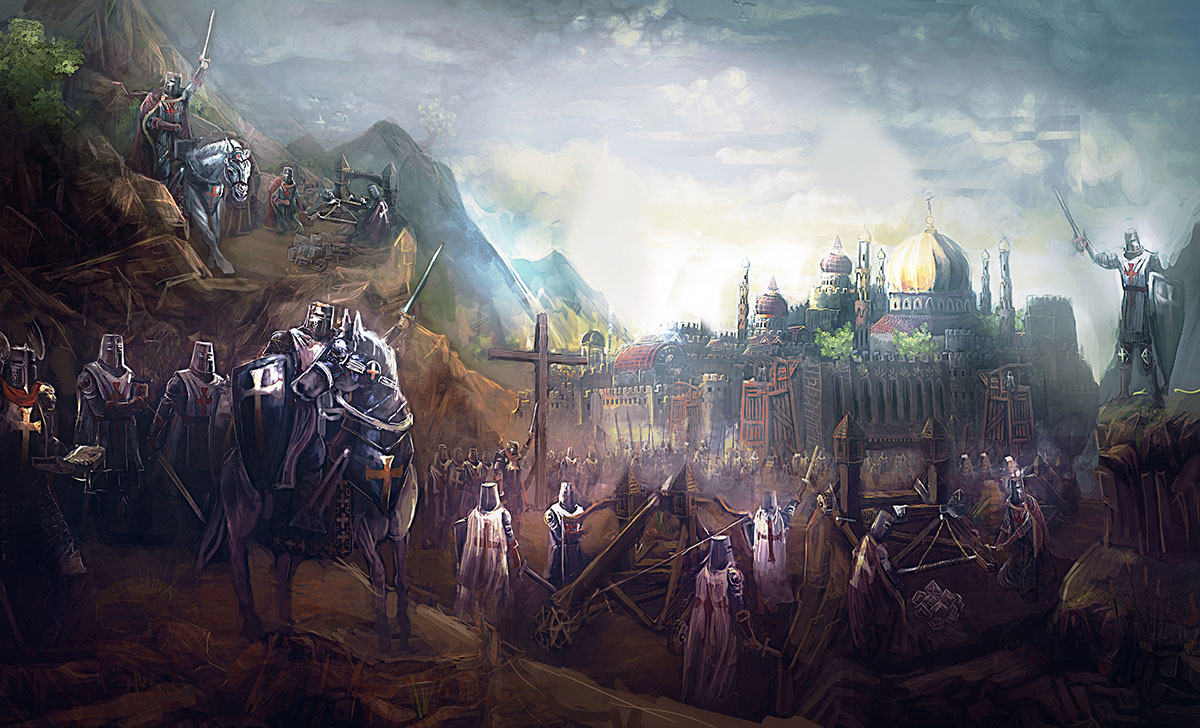
The First Crusade
The first crusade was instigated at the Council of Clermont, after an initial expedition led by Peter the Hermit, the main force left in late summer of 1096, arriving in Constantinople between November and April the following year.
During the following years the crusaders assisted in the recapturing of Nicaea, restoring much of Western Anatolia.
The crusaders also successfully captured Jerusalem and established the Levantine Crusader states.
The overall result was a crusader victory.
 Peter the Hermit shows the crusaders the way to Jerusalem. French illumination c.1270
Peter the Hermit shows the crusaders the way to Jerusalem. French illumination c.1270
The first crusade was instigated at the Council of Clermont, after an initial expedition led by Peter the Hermit, the main force left in late summer of 1096, arriving in Constantinople between November and April the following year.
During the following years the crusaders assisted in the recapturing of Nicaea, restoring much of Western Anatolia.
The crusaders also successfully captured Jerusalem and established the Levantine Crusader states.
The overall result was a crusader victory.
 Peter the Hermit shows the crusaders the way to Jerusalem. French illumination c.1270
Peter the Hermit shows the crusaders the way to Jerusalem. French illumination c.1270The Second Crusade
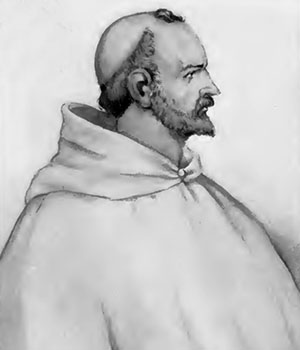 Pope Eugene III
The second Crusade was instigated by the fall of Edessa to the forces of Zengi. The Crusade was announced by Pope Eugene III and was led by the Kings of France and Germany. Their armies marched separately across Europe, both armies were defeated, separately, by the Seljuk Turks. But the remnants of the armies did reach Jerusalem and took part in an ill-advised attack on Damascus.
Pope Eugene III
The second Crusade was instigated by the fall of Edessa to the forces of Zengi. The Crusade was announced by Pope Eugene III and was led by the Kings of France and Germany. Their armies marched separately across Europe, both armies were defeated, separately, by the Seljuk Turks. But the remnants of the armies did reach Jerusalem and took part in an ill-advised attack on Damascus.
Whilst the crusade in the East was a failure, there was success in the West. A combined multi-national force, numbering 13,000, travelling by ship from England to the Holy Land; stopped and helped the smaller (7,000) Portuguese army capture Lisbon and expel its Moorish occupants.
 Pope Eugene III
Pope Eugene IIIWhilst the crusade in the East was a failure, there was success in the West. A combined multi-national force, numbering 13,000, travelling by ship from England to the Holy Land; stopped and helped the smaller (7,000) Portuguese army capture Lisbon and expel its Moorish occupants.
The Third Crusade
 Manuscript depiction of the siege of Acre c.1280
The third crusade was an attempt by the three most powerful states of Western Christianity to reconquer the Holy Land after the capture of Jerusalem by Saladin.
Manuscript depiction of the siege of Acre c.1280
The third crusade was an attempt by the three most powerful states of Western Christianity to reconquer the Holy Land after the capture of Jerusalem by Saladin.
It was partially successful, recapturing Acre and Jaffa, and reversing most of Saladin’s gains. But it failed to take Jerusalem.
Overall considered a victory leading to a three year truce, with the safety of both Christian and Muslim pilgrims guaranteed.
The Crusade also captured Cyprus and established the independent kingdom of Cyprus.
 Manuscript depiction of the siege of Acre c.1280
Manuscript depiction of the siege of Acre c.1280It was partially successful, recapturing Acre and Jaffa, and reversing most of Saladin’s gains. But it failed to take Jerusalem.
Overall considered a victory leading to a three year truce, with the safety of both Christian and Muslim pilgrims guaranteed.
The Crusade also captured Cyprus and established the independent kingdom of Cyprus.
The Fourth Crusade
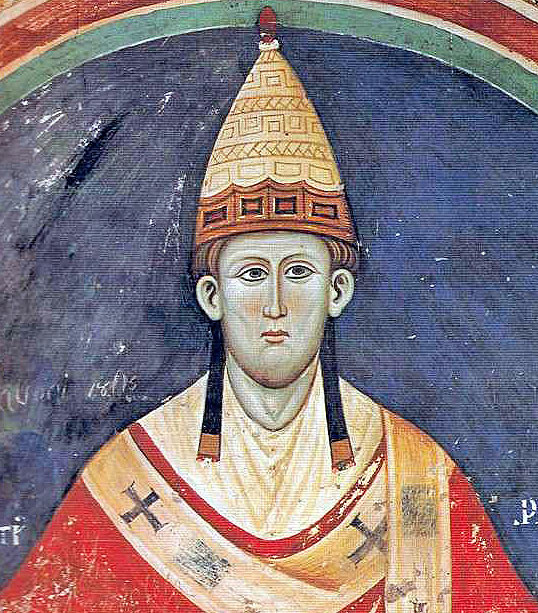 Pope Innocent III
The fourth crusade was called by Pope Innocent III. Its intent was the recapture of Jerusalem. However, instead the army conducted the siege of Zara on the Adriatic and later sacked Constantinople. When the Pope heard of this he excommunicated the army.
Pope Innocent III
The fourth crusade was called by Pope Innocent III. Its intent was the recapture of Jerusalem. However, instead the army conducted the siege of Zara on the Adriatic and later sacked Constantinople. When the Pope heard of this he excommunicated the army.
The huge wealth of Constantinople was taken by the Crusaders, most of whom then returned home. Only a few continuing on to the Holy Land.
 Pope Innocent III
Pope Innocent IIIThe huge wealth of Constantinople was taken by the Crusaders, most of whom then returned home. Only a few continuing on to the Holy Land.
The Fifth Crusade
The fifth crusade was an attempt by Western Europeans to reacquire Jerusalem and the rest of the Holy Land by first conquering Cairo. The port of Damietta was taken and they marched towards Cairo in July 1221. Dwindling supplies caused the abandonment of the siege of Al-Mansoura en route and a retreat.
Sultan al-Kamil ordered the destruction of a dam across the Nile, the resulting deluge flooded the Crusader camp and led to their eventual surrender.
An eight-year peace agreement followed.
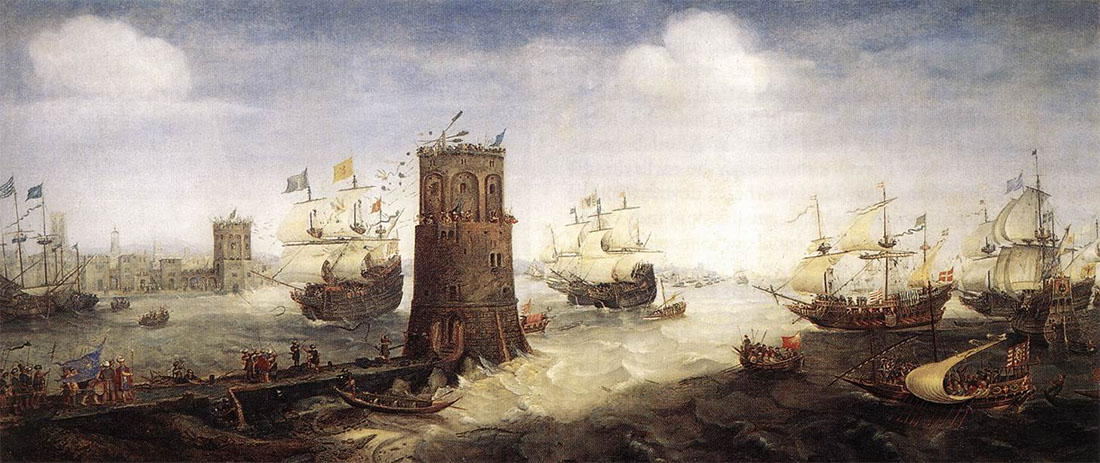 The siege of Damietta
The siege of Damietta
The fifth crusade was an attempt by Western Europeans to reacquire Jerusalem and the rest of the Holy Land by first conquering Cairo. The port of Damietta was taken and they marched towards Cairo in July 1221. Dwindling supplies caused the abandonment of the siege of Al-Mansoura en route and a retreat.
Sultan al-Kamil ordered the destruction of a dam across the Nile, the resulting deluge flooded the Crusader camp and led to their eventual surrender.
An eight-year peace agreement followed.
 The siege of Damietta
The siege of Damietta
The Sixth Crusade
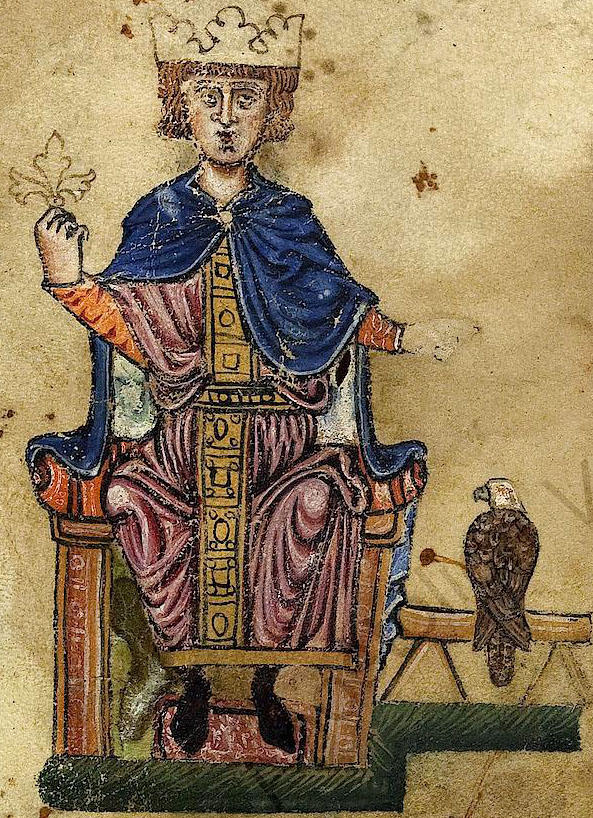 Portrait of Frederick II from the 'Manfred manuscript'" (Biblioteca Vaticana, Pal. lat 1071) of De arte venandi cum avibus.
The sixth crusade, was once again a military expedition to recapture Jerusalem. It began seven years after the failure of the fifth crusade and involved very little actual fighting.
Portrait of Frederick II from the 'Manfred manuscript'" (Biblioteca Vaticana, Pal. lat 1071) of De arte venandi cum avibus.
The sixth crusade, was once again a military expedition to recapture Jerusalem. It began seven years after the failure of the fifth crusade and involved very little actual fighting.
Diplomatic maneuvering by the Holy Roman Emperor and King of Sicily, resulted in the Kingdom of Jerusalem regaining some control over Jerusalem itself, and other areas of the Holy Land, for the next fifteen years.
This crusade was therefore a diplomatic victory.
 Portrait of Frederick II from the 'Manfred manuscript'" (Biblioteca Vaticana, Pal. lat 1071) of De arte venandi cum avibus.
Portrait of Frederick II from the 'Manfred manuscript'" (Biblioteca Vaticana, Pal. lat 1071) of De arte venandi cum avibus.Diplomatic maneuvering by the Holy Roman Emperor and King of Sicily, resulted in the Kingdom of Jerusalem regaining some control over Jerusalem itself, and other areas of the Holy Land, for the next fifteen years.
This crusade was therefore a diplomatic victory.
The Seventh Crusade
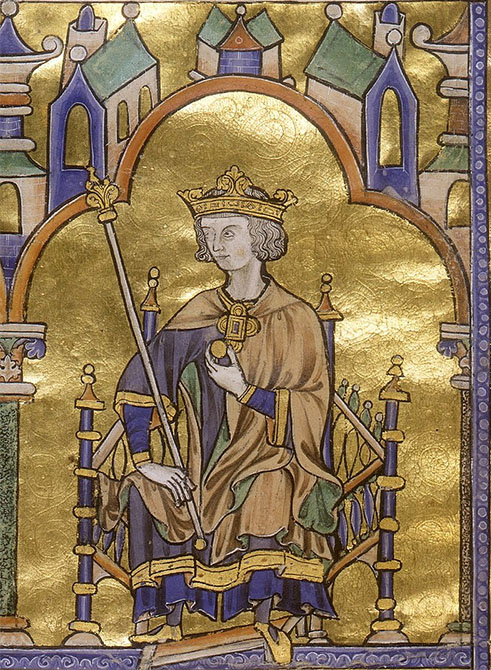 Contemporary depiction of King Louis IX from about 1230
The seventh Crusade was led by the French King Louis IX with the intent to conquer Egypt and take over Jerusalem.
Contemporary depiction of King Louis IX from about 1230
The seventh Crusade was led by the French King Louis IX with the intent to conquer Egypt and take over Jerusalem.
The Crusaders numbered 15,000 infantry, 2,400 to 2,800 Knights and 5,000 crossbowmen. They sailed initially to Cyprus and spent the winter there before heading to Egypt, Landing in Damietta in June.
But the Crusader army was defeated by the Ayyubid army and their allies, at the battle of Al Mansurah. Then King Louis was captured at the battle of Fariskur and a sum of 800,000 bezants paid in ransom for his return.
 Contemporary depiction of King Louis IX from about 1230
Contemporary depiction of King Louis IX from about 1230The Crusaders numbered 15,000 infantry, 2,400 to 2,800 Knights and 5,000 crossbowmen. They sailed initially to Cyprus and spent the winter there before heading to Egypt, Landing in Damietta in June.
But the Crusader army was defeated by the Ayyubid army and their allies, at the battle of Al Mansurah. Then King Louis was captured at the battle of Fariskur and a sum of 800,000 bezants paid in ransom for his return.
The Eighth Crusade
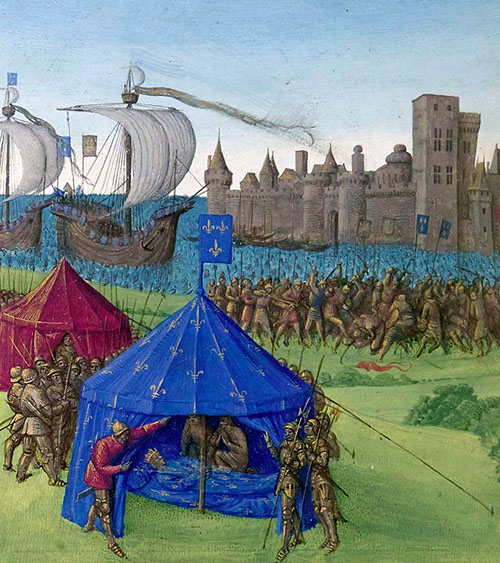 Death of Louis IX during the siege of Tunis
The eighth crusade was launched by Louis IX of France in 1270. The 8th crusade is sometimes counted as the 7th, if the 5th and 6th crusades of Frederick II are counted as one. The 9th is also sometimes counted as part of the 8th!
Death of Louis IX during the siege of Tunis
The eighth crusade was launched by Louis IX of France in 1270. The 8th crusade is sometimes counted as the 7th, if the 5th and 6th crusades of Frederick II are counted as one. The 9th is also sometimes counted as part of the 8th!
The Crusade is considered a failure after Louis died, of the plague, shortly after arriving on the shores of Tunisia, with his disease-ridden army dispersing back to Europe shortly after his death.
Nothing was achieved.
 Death of Louis IX during the siege of Tunis
Death of Louis IX during the siege of TunisThe Crusade is considered a failure after Louis died, of the plague, shortly after arriving on the shores of Tunisia, with his disease-ridden army dispersing back to Europe shortly after his death.
Nothing was achieved.
The Ninth Crusade
 Portrait in Westminster Abbey, thought to be of Edward I
The ninth crusade is also called Lord Edward’s Crusade, he was the future King Edward 1st of England.
Portrait in Westminster Abbey, thought to be of Edward I
The ninth crusade is also called Lord Edward’s Crusade, he was the future King Edward 1st of England.
The Crusaders battles were with the Baibars each achieving limited success. But pressing concerns at home caused Edward to withdraw.
It is argued that the Crusader spirit was nearly extinct by this period. It also foreshadowed the imminent collapse of the last remaining Crusader strongholds along the Mediterranean coast.
 Portrait in Westminster Abbey, thought to be of Edward I
Portrait in Westminster Abbey, thought to be of Edward IThe Crusaders battles were with the Baibars each achieving limited success. But pressing concerns at home caused Edward to withdraw.
It is argued that the Crusader spirit was nearly extinct by this period. It also foreshadowed the imminent collapse of the last remaining Crusader strongholds along the Mediterranean coast.
< back